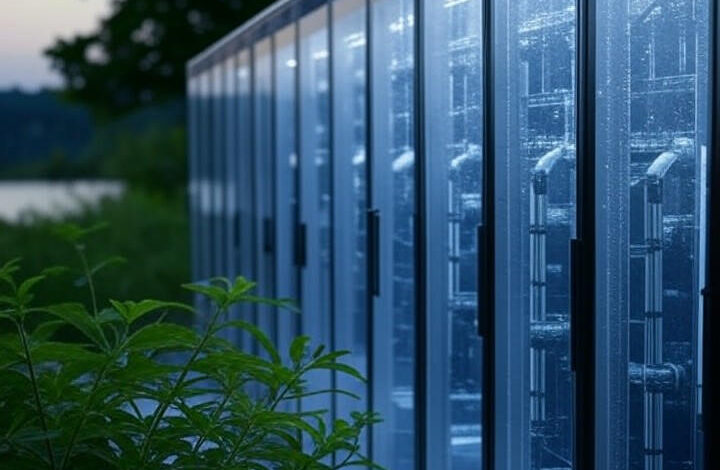Tech Giants Face Urgent AI Water Crisis: New Data Revealed

UPDATE: New reports confirm that tech giants are at the center of a rapidly escalating controversy over water usage as they expand artificial intelligence capabilities. As data centers proliferate, experts warn that water consumption could surge dramatically, with projections indicating up to 1.1 billion cubic meters of water used annually in the U.S. by 2030. This alarming trend raises urgent questions about the sustainability of AI technology in an already water-stressed world.
In a striking analysis, Andy Masley argues that the so-called AI water crisis may be overstated. He claims much of the water used in data centers evaporates and re-enters the water cycle, rather than being permanently lost. Masley’s insights, shared in his Substack newsletter, challenge the narrative that paints data centers as environmental villains.
The latest study from Nature Sustainability reveals that U.S. AI servers could consume water equivalent to the needs of 10 million Americans. However, Masley emphasizes that this evaporation contributes to rainfall elsewhere, contrasting sharply with industries like agriculture that deplete aquifers. He points out that in regions with ample water resources, such as the Midwest, the impact is further mitigated.
Despite these reassurances, critics have raised alarms over localized impacts. The United Nations Environment Programme (UNEP) highlighted concerns regarding toxic e-waste and reliance on fossil fuels for energy, stressing that data centers exacerbate climate change. The urgency is palpable as generative AI is projected to increase U.S. data center electricity consumption to 12% of the national total by 2028.
Masley counters claims of a looming crisis by noting that Google’s 5.6 billion gallons of water usage in 2022 is dwarfed by the daily U.S. consumption of 322 billion gallons. As discussions heat up on platforms like X (formerly Twitter), users express fears that AI could consume up to 1.7 trillion gallons worldwide by 2027. However, Masley asserts that most of this water is recycled back into the environment, disputing the idea of a permanent loss.
The conversation is intensifying in drought-prone areas, where water demands could strain resources even further. A Food & Water Watch report speculates that AI could consume enough electricity to power 28 million households by 2028, raising alarms in regions like Arizona. Yet, Masley points to Microsoft’s data centers in water-rich locations in the Netherlands, where billions of liters are utilized without significant depletion.
Amid these concerns, the EU is pushing for transparency with its upcoming AI Act, which mandates environmental impact reporting. Masley views this as a positive step but cautions against alarmist rhetoric. He argues that AI technologies can drive water-saving innovations, such as smart irrigation, which reduce agricultural waste.
In a proactive response, tech companies like Google and Microsoft have committed to replenishing more water than they consume by 2030. Investments in watershed projects are part of their strategy to tackle the issue head-on. A recent study from Cornell University suggests that utilizing closed-loop cooling systems could significantly reduce net water consumption in data centers.
Lawmakers are also taking action. The Artificial Intelligence Environmental Impacts Act of 2024, introduced by Senator Edward Markey, aims to set standards for assessing the environmental impact of AI. However, Masley warns that excessive regulation could hinder innovation in a sector that has the potential to deliver significant environmental benefits.
As the debate continues, emerging technologies promise to deliver solutions. AI-driven water treatment innovations are being explored, offering hope for future conservation efforts. Masley argues that framing AI solely as a water consumer detracts from the real culprits of water depletion, mainly agriculture, which utilizes 70% of the world’s freshwater resources.
In conclusion, as the AI water crisis unfolds, it underscores the broader challenges of sustainability in the tech industry. The UNEP emphasizes the need for global standards, while public sentiment reflects anxiety about the environmental impact of AI. With proactive measures and innovation, the narrative may shift from one of crisis to one of opportunity, allowing technology to flourish without compromising vital resources.






